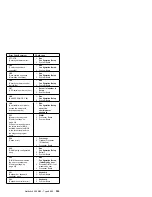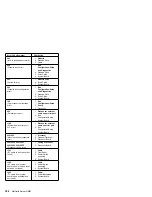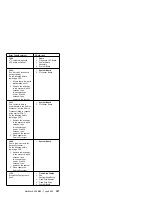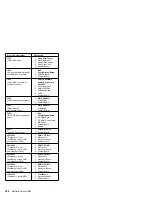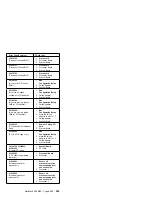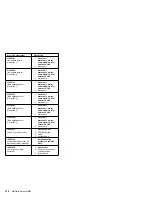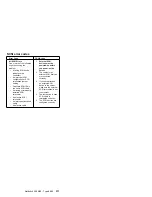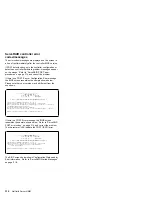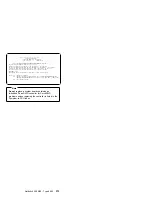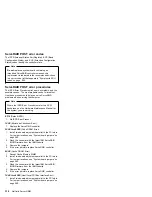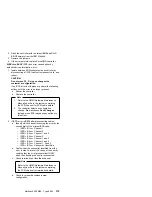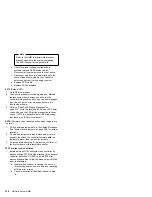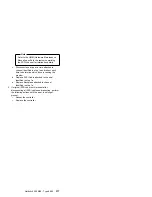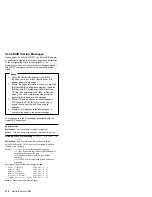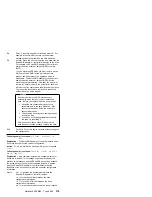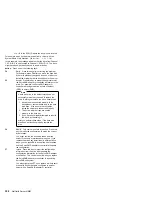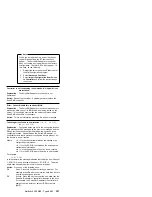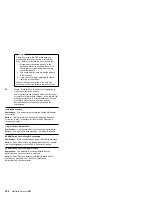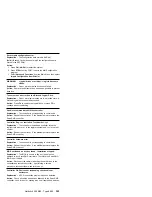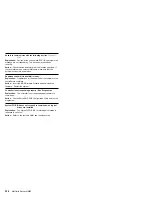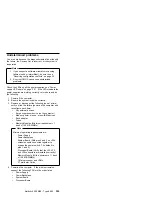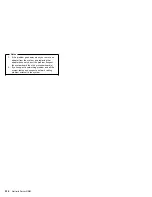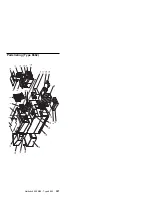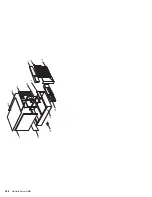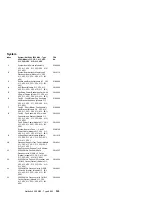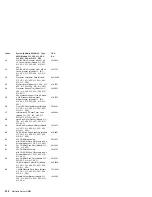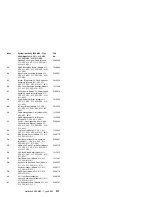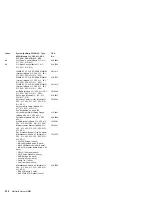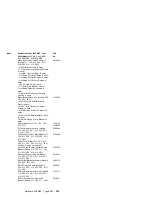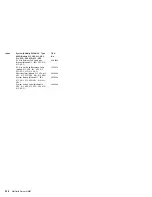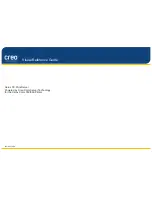
F4
Retry. Press this key after correcting a problem. For
example, press F4 after you turn on the external
storage enclosure that contains the hard disk drive.
F5
Accept. Press this key to accept the new state that the
ServeRAID adapter or controller will assign to the drive.
For example, the ServeRAID adapter or controller will
assign the drive a state of defunct (DDD) or empty
(EMP).
You can also press F5 when you must remove a drive,
RAID level-1 and RAID level-5 logical drives are
present, and performance in a degraded mode is
acceptable. The ServeRAID adapter or controller will
assign the drive a state of defunct (DDD), but the
server can complete startup. However, the array will
remain in
Critical mode and the potential for data loss
will exist until you replace and rebuild the defunct drive.
To prevent the loss of data, replace and rebuild the
defunct drive in a timely manner.
Note
A hard disk drive in the DDD state does not
necessarily mean that you need to replace the
drive. Before you replace the drive, ensure that:
1. All cables are connected properly to the
backplane and to the hard disk drive. Also,
ensure that all cables inside the server are
connected properly.
2. The hot-swap drive trays are seated properly
in the drive bay.
3. If you have not already attempted to rebuild
the drive, try rebuilding it.
After you perform these steps, if the hard disk
drive does not function properly, replace the drive.
F10
Continue. Press this key to continue without change to
the configuration.
Following new drives found
(old state:
new state:
ch:
SID)
Explanation: The ServeRAID adapter or controller detects a new
drive that is not part of the current configuration.
Action: This is an information message. No action is required.
— or —
Following new drives found:
(host id:
old ch:
old SID
>
new ch:
new SID)
Explanation: New controller installed in a configured server, or
drives are imported. This message might be preceded by the
previous two messages and the F5 and F6 key choices because
the drives were not found in the configured location. Appears
when the ServeRAID adapter or controller detects that the
identifiers of the drives do not match the controller configuration
information.
Where:
host id
identifies the System Name where the
ServeRAID adapter or controller resides.
old ch
is the channel that matches the drive
configuration information.
old SID
is the SCSI ID that matches the drive
configuration information.
new ch
is the channel where the drive is now located.
Netfinity 5500 M20 - Type 8662
319
Summary of Contents for 866251Y - Netfinity 5500 M20
Page 2: ......
Page 8: ...vi Netfinity Server HMM...
Page 336: ...32 33 33 34 35 36 37 38 39 40 41 42 43 328 Netfinity Server HMM...
Page 346: ...338 Netfinity Server HMM...
Page 354: ...346 Netfinity Server HMM...
Page 355: ...Related service information 347...
Page 356: ...348 Netfinity Server HMM...
Page 357: ...Related service information 349...
Page 368: ...360 Netfinity Server HMM...
Page 369: ...Related service information 361...
Page 385: ......
Page 386: ...IBM Part Number 09N1015 Printed in U S A S37L 2 2 1...

